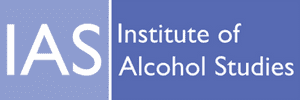This year’s (2015) Statistics on Alcohol report provides a mixed outlook for England’s relationship with alcohol, as small declines in consumption levels are offset by rises in hospital admissions and deaths occurring from the misuse of alcohol.
Published by the Health and Social Care Information Centre (HSCIC), the figures show that 15% of men and 20% of women reported abstaining from alcohol in 2013; 18% of men and 13% of women drank at an increased risk of harm; and 5% of men and 3% of women drank at higher risk levels.*
The report also confirms the continuation of the downward trend in recorded underage drinking since 2003. In 2013, 39% of pupils in years 7 to 11 said that they had drunk alcohol at least once. This is lower than at any time since 1988, when the survey first measured the prevalence of drinking in this age group.
However, alcohol-related hospital admissions remain above the million mark, hitting a record 1,059,210 in 2013/14 (broad measure). The broad measure defines alcohol-related admissions as those where the primary or any secondary reason for admission relates to alcohol. The total number of admissions related to alcohol in 2013/14 represents a 5% increase on the previous year (2012/13) and 115% rise on a decade ago.
The regional outlook was bleakest for the North of England, where the North West and North East regions of the country had the highest number and rates of hospital admissions for alcohol-related causes in 2013/14 respectively. The rate of alcohol-related admissions was highest in the North East, 2,480 per 100,000 population. Hospitals in the North West received the most alcohol-related admissions over the period (173,020). The North East region also had the highest proportion of binge drinkers (36%).
Along with increases in alcohol-related admissions, the Statistics on Alcohol reported further rises in the levels of spending on drugs for treating alcohol dependence. The Net Ingredient Cost (NIC) of drugs for treating alcohol dependence reached a new record high of £3.43 million in 2014, almost 10% up on 2013 (£3.13m), and more than double the NIC in 2004 of £1.52m.
The number of alcohol-related deaths in England also increased compared with the previous years. In 2013 there were 6,592 alcohol-related deaths. This is a 1 per cent increase from 2012 (6,495) and a 10 per cent increase from 2003 (5,984).
The Statistics on Alcohol in England report is an annual HSCIC report presenting a broad picture of health issues related to alcohol misuse, drinking habits and behaviours, drinking related ill health and mortality, affordability of alcohol and alcohol related costs. It forms part of a suite of statistical reports covering various aspects of health and social care including smoking, drug use and obesity, nutrition and physical activity.
* The level of drinking defined as increased risk is typically between 21 and 50 units per week for men and between 14 and 35 units per week for women. The level of drinking defined as higher risk is typically above 50 units per week for men and between 35 units per week for women.
